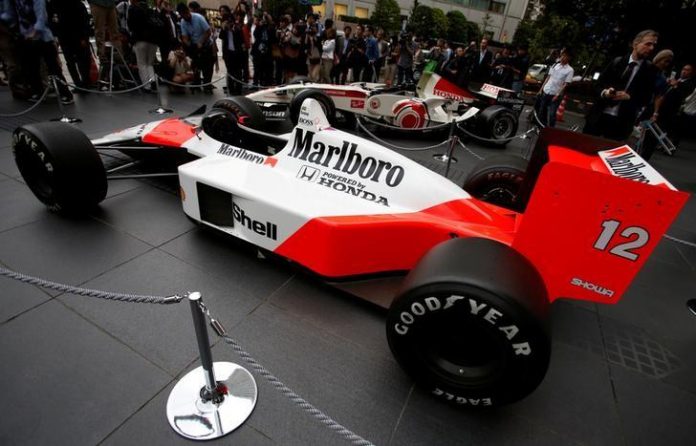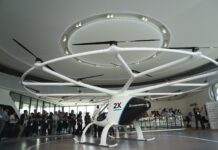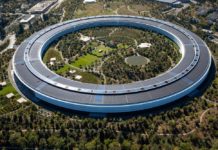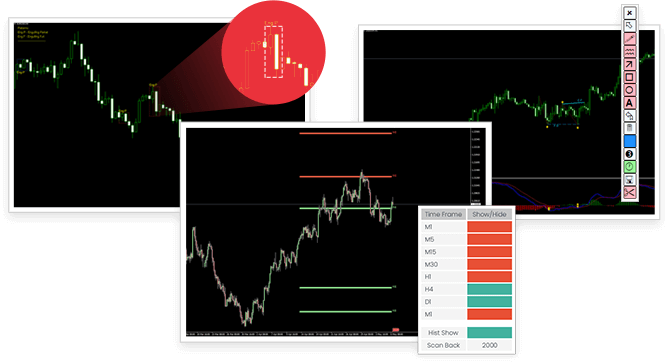
The driver punched the air as his red and white Honda McLaren roared over the finish line. It was Suzuka, Japan, 1988, and Ayrton Senna had just become Formula One world champion for the first time. The McLaren racing team and its engine maker, Honda Motor, were unstoppable that year, their drivers winning all but one of the 16 grand prix races.
Off the track Honda had been tasting success, too. In the 1970s, its engineers had raised the bar for fuel efficiency and cleaner emissions with the CVCC engine. In the 1980s, as its engines were propelling Senna to multiple victories, the Civic and Accord cars were redefining the American family sedan. In 1997, Honda became one of the first carmakers to unveil an all-electric battery car, the EV Plus, capable of meeting California’s zero emission requirement.
Jump forward almost 30 years from that Senna moment and Honda is flailing. On the racetrack, the Honda McLaren partnership is in trouble: The team is without a single win this season, and McLaren is losing patience with its engine supplier and speaking of a parting of the ways.
On the road, the Honda fleet has been dogged by recalls. More than 11 million vehicles have been recalled in the United States since 2008 due to faulty airbags. In 2013 and 2014 there were five back-to-back recalls for the Fit and Vezel hybrid vehicles due to transmission defects. Honda has lost ground in electric cars to Tesla and others.
“There’s no doubt we lost our mojo – our way as an engineering company that made Honda Honda,” Chief Executive Takahiro Hachigo told Reuters.
Hachigo joined Honda as an engineer in 1982 and became CEO in June 2015. Now he wants to revive a culture that encouraged engineers to take risks and return to a corporate structure that protected innovators from bureaucrats focused on cost-cutting. To help him achieve this, he says he has tapped into the ideas of a small group of Honda engineers, managers and planners. This group is modeled on the freewheeling “skunkworks” teams that drove aircraft development at Lockheed Martin, computer design at Apple and self-drive technology at Google.
In interviews, more than 20 current and former Honda executives and engineers at the company’s facilities in Japan, China and the United States recounted the missteps that they say contributed to Honda’s decline as an innovator. They also revealed new details of the firm’s efforts to rediscover its creative spark.
They said Honda had become trapped by Japan’s “monozukuri” (literally, “making things”) approach to manufacturing. This culture of incremental improvement and production line efficiency, called “kaizen”, served the company well in the decades after World War Two, they said, but today’s challenges – electrification, computerization, self-driving cars – demand a more nimble and flexible approach.
Most importantly, they said, over the past two decades company executives in Tokyo were given too much control over research and development. In their view, this led to shareholder value being prioritized over innovation. There was a reluctance to draw on talent from outside Japan. In its quest to deliver for shareholders, Honda sought to maximize volume and profit and match the product range of its main Japanese rival, Toyota.
“The upshot was, as we obsessed about Toyota and beating it in the marketplace, we started to look like Toyota. We started to forget why we existed as a company to begin with,” Honda R&D President and CEO Yoshiyuki Matsumoto told Reuters.
Honda’s revenues have grown strongly since 2000 and its operating margin stood at 6.0 percent in the financial year ended March 31, 2017, compared with 7.2 percent at Toyota. But Honda’s cars have slipped down quality rankings, from seventh in market research firm J.D. Power’s initial quality study in 2000 to 20th in 2017.
HONDA CIVIC LOSES ITS SHINE
Striving to satisfy shareholders meant controlling costs. Honda’s chief executive from 2003 to 2009, Takeo Fukui, broke with the firm’s tradition of giving tech managers discretion over how to spend the roughly five percent of revenue allocated to the tech arm, according to the current and former Honda executives and engineers.
When Takanobu Ito replaced Fukui as CEO in 2009, he further tightened control over the design phase. He did this, the sources added, by moving several senior posts in the tech division to corporate headquarters in Tokyo from the research and development unit, whose main automotive center is near Utsunomiya, an hour north of the capital city by bullet train.
Ito and Fukui did not respond to written questions from Reuters.
Honda’s popular Civic car was one of the casualties of these changes, according to the engineer in charge of the model’s redesign beginning in 2007. With a reputation for outstanding engineering, reliability and affordability, the Civic was one of Honda’s top selling cars.
“Right from the get-go, the program was about making cost savings in real terms,” the chief engineer for the redesign, Mitsuru Horikoshi, told Reuters.
To that end the global automotive business unit, headed at the time by future CEO Ito, and the tech division decided that the redesigned Civic would use many of the same components and systems as the previous model, including the front and rear suspension systems and the front section of the car.
Civic engineer Horikoshi had finished a first design setting down the basic engineering points by February 2008 and a more detailed design by April. When rising gasoline, steel and other prices pushed up manufacturing costs by between $1,200 and $1,400 per vehicle, Horikoshi’s team refined their design to improve the car’s fuel economy. In early July 2008 they sought management approval for their plan at a meeting in Torrance, California, Honda’s U.S. sales headquarters.
Global automotive head Ito said he would review the design overnight, Horikoshi recalled. The next morning, Ito came back and told the team to make the car smaller and cheaper to produce, and complete the redesign by the end of that month.
“With one blow of a cost chopping knife, Ito basically told us to take our design back” to the first plan. “It’s just unheard of. It was unprecedented,” Horikoshi said.
To meet Ito’s specifications, Horikoshi used cheaper materials and made the car smaller, cutting its length by 45 millimeters and its width by 25 millimeters. He also reduced the wheelbase, the distance between the front and rear axle, by 30 millimeters.
A former leader of Honda’s R&D unit said the firm “lapsed deeper into a bunker mentality, and that translated into our products. It was cut, cut, cut, and it cheapened our cars.”
By the end of 2008, Horikoshi’s team was wrapping up the Civic design. Half a year behind schedule, they were still $200 short of the cost target per car.
“I already had my pants down to my ankles – nothing more to shed,” Horikoshi said.
When the 2012 model year Civic went on sale in 2011, it was met with a barrage of criticism. Influential U.S. magazine Consumer Reports dropped the car from its recommended list for the first time since it began rating vehicles in 1993. It criticized the new Civic for a poor quality interior and uneven ride.
R&D chief Matsumoto said the episode is a lesson that creativity should not be sacrificed on the altar of shareholder value. During previous assignments for Honda in Thailand and India, Matsumoto said he had looked at headquarters from afar and recognized a lack of creativity there.
“We have to be allowed to go wild at times. If you operated a technology center only from an efficiency perspective, you’d kill the place. Which is exactly what happened at Honda. We don’t want headquarters people telling engineers what to do,” he said.
Honda went back to the drawing board. The redesigned model that replaced the 2012 Civic was named the 2016 North American Car of the Year by car journalists.
Ito and Fukui did not respond to questions from Reuters about the Civic. A former senior executive said the decision to reduce costs was taken in the context of a global economic slowdown. Honda’s chief spokesperson, Natsuno Asanuma, said the focus on shareholder value under previous management was “for the sake of the company’s future.”
James Chao, Asia-Pacific chief of consultancy at IHS Markit Automotive, said Honda failed to keep up with developments in suspension and transmission during Fukui and Ito’s tenure, but the firm was doing well enough financially, which masked the problem.
“One could argue that Honda nonetheless performed nearly as well with the lower investment, but it was hard not to see that they were no longer leading in some technology areas,” said Chao, who is based in Shanghai. Honda’s rivals, such as Ford, were not reining in costs to the same degree, Chao said.
At the same time as Honda bosses were tightening the budget for the 2012 Civic, they were also looking for savings in research and development.
Other car firms were investing heavily in green technology, an area where Honda had already established itself as a leader with the unveiling of its EV Plus battery car in 1997, one of the first electric vehicles from a major carmaker. But just as its competitors were investing more, Honda began holding back.
Fukui, who became CEO in 2003, felt Honda was engaged in too many areas of research, four current and former executives and engineers said. As a result, Honda scaled back work on plug-in battery electric vehicles and put its faith in the hydrogen-fueled car. By the time Honda turned back to plug-in cars in the late 2000s it had already lost several years to its competitors. Honda finally came up with a competitive plug-in car in 2013, 16 years after its original EV Plus. It is still playing catch up with the likes of Tesla.
Fukui did not respond to questions from Reuters. Two former engineers said Fukui was calculating that advanced battery technology would become commoditized and so Honda would be able to buy it in if necessary. This assumption was correct, the former engineers said.
FRUSTRATED TALENT
For too long Honda has overlooked the potential of its workforce outside Japan, and that has harmed the firm, said Erik Berkman, a former head of Honda’s technology unit in the United States, the carmaker’s biggest market.
Honda’s management team, board of directors and operating officers were until recently all male and Japanese. The company named its first foreign (Japanese-Brazilian) and first female board members only three years ago.
“We don’t want to be ‘indentured servants’,” Berkman said. “My attitude is: ‘This is my company too.’ Increasing diversity within Honda, and specifically Honda R&D, is our path forward.”
Berkman told Reuters in an interview that many capable engineers and researchers in the United States had left Honda over the years out of frustration at being disregarded. “Many associates (in the U.S.) felt Japan bosses were too controlling and unwilling to take on what we thought were reasonable risks,” said Berkman.
Many of those in the audience at Motegi, including senior managers, congratulated Berkman on his speech, according to Berkman and two other participants at the meeting. But shortly afterwards Berkman was demoted from his role as Honda’s North American technology chief and reassigned to a more junior planning position in another unit.
“Maybe it had nothing to do with the speech. In my mind, it did. I kind of bit the hand that feeds me,” he said.
Honda declined to comment on the episode.
Berkman said he decided to retire from the company where he had worked for 33 years. “I had been planning for retirement for many years and felt this was the right time to go,” he said.
Speaking to Reuters, R&D head Matsumoto acknowledged that Honda’s technology and research staff lack diversity.
“You only see Japanese faces in the place,” he said. “But we are repositioning tech centers in places like the United States, Thailand and China to function more like satellite centers to our central labs in Japan, so as to encourage exchanges of people. Pureblood-ism doesn’t cut it. That’s our growing consensus.”
SKUNKWORKS
Japan’s manufacturing sector, especially the auto industry, prospered in the post-war era by harnessing monozukuri principles of steady design improvement and lean manufacturing that encapsulate the Japanese reverence for craftsmanship in manufacturing. The aim was to produce vehicles with one-third of the defects of mass-produced cars using half the factory space, half the capital, and half the engineering time. Those efforts, honed over years, elevated the quality and reliability of Japanese cars to the point that by the 1980s consumers in the United States began choosing Japanese cars over U.S. made vehicles.
Today the industry is facing new challenges, however. Artificial intelligence and self-drive cars are forcing carmakers to rethink the way they design and produce vehicles.
“Japan’s auto industry emerged in the post World War Two era by chipping away day in day out to improve products. That’s not going to cut it in the face of the rise of disruptive self-drive, connected car technology and electrification,” Matsumoto said. “The new era calls for a totally new approach.”
Some changes are under way at Honda to address these disruptive forces. These include moving tech management jobs out of Tokyo to give the technology division more autonomy.
Honda has struck deals with third parties to accelerate progress on its smart-connected electric car. These include an agreement with Hitachi Ltd to develop and produce motors for plug-in electric cars and a deal with General Motors Co to produce hydrogen fuel cell power systems in the United States. Honda is also in talks with Alphabet Inc’s Google to supply vehicles to jointly test self-driving technology.
A key force for change inside the company is the small group of engineers, managers and planners who are working quietly behind the scenes to revamp the company, according to Hachigo and Matsumoto.
The group’s existence is little known inside the company. The team works out of Kyobashi, a neighborhood near Tokyo Station. Honda bosses declined to share the identities of its members.
They did share some of the ideas it is advocating. These include streamlining Honda’s product development process, which became bloated as the company got bigger, and developing underlying technologies for a range of vehicles to develop cars more efficiently and respond more quickly to changes in customer tastes. The group also wants to increase the use of virtual engineering tools, such as computer aided design, to speed up development, and it is working on an improved design for plug-in battery cars.
Matsumoto is hoping the group will be transformative. But he doesn’t expect change to be instant.
“Almost always change – any change – starts on the fringes,” he said. “This group is evidence that we still somewhere inside this company have the mojo we lost. There is that DNA left in us.”






















Interesting post.. thank you